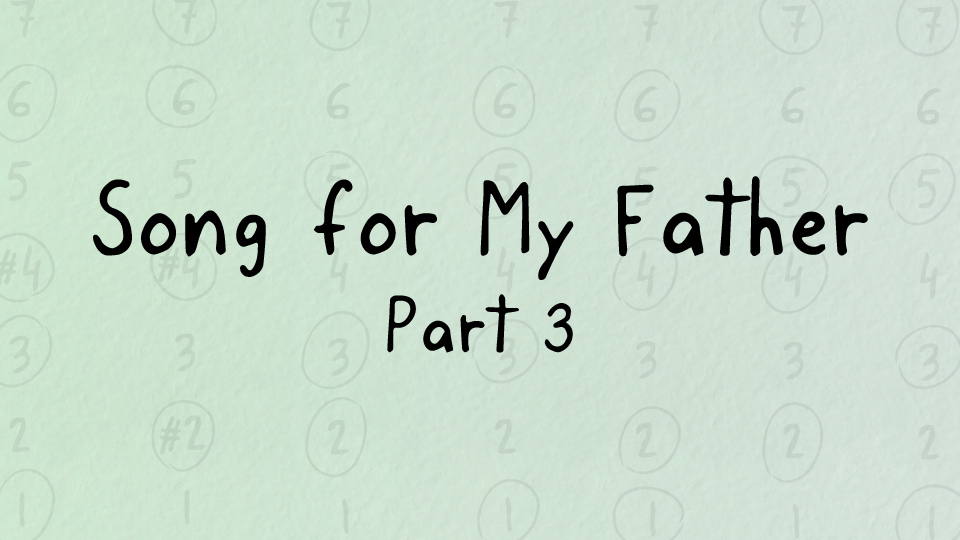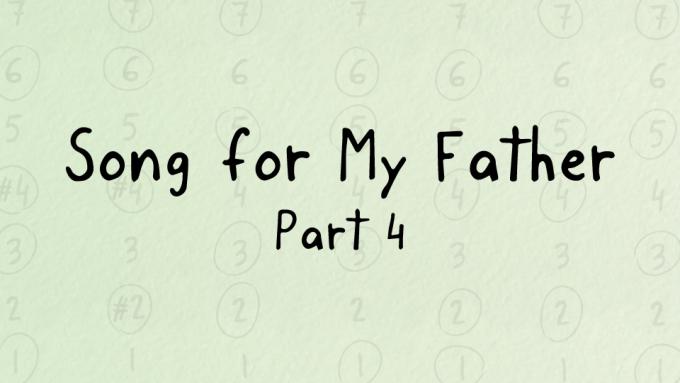In the last two lessons you learned to build the IFR Tonal Map on your instrument and you used this tonal map to study the sounds of the 6- chord and the 5D chord. (To start at the beginning of this lesson series please click the link below.)
(Click here for lesson #1 on "Song for My Father".)
A new harmonic concept: the 4D chord
In today's lesson we are going to learn to use the IFR Tonal Map to create the next chord that appears in the song, which is the 4D chord (pronounced "four dominant chord"). Remember that for this song we are building our tonal map in the key of Ab:

*Note to transposing instruments: please refer back to lesson 1 in this series for the explanation of how to transpose these notes for your instrument.
The 4D chord that we are going to study today is the first chord in the song that requires us to go outside the key of the music. Both of the first two chords we studied in the earlier lessons (6- and 5D) come directly from the major scale so we were able to create them using nothing more than the seven notes of the key of Ab. But the 4D chord creates an alteration to the basic harmonic environment of the song, producing the following altered scale:

*Note to theory buffs: The note B natural that appears in the drawing above should technically be called "C flat" because it's considered to be the note C of the scale, just lowered a half step. The disadvantage of calling this note C flat is that it might slow you down in actually reaching for the note on your instrument because you need to make the mental translation that C flat = B natural. But the advantage of calling the note C flat is that you get a more proper scale. (The scale as written above has two versions of B and not a single C, which might be even more confusing depending on your point of view.) I choose to label the note as B natural because as an improviser I'm not very focused on the names of the notes anyway. My focus is on visualizing the intervals on my tonal map drawing, so I prefer to keep the names of the notes as simple as possible. But you're free to name this note however feels more logical to you.
Playing activity #1
Practice improvising over this jam track using just the notes that you see in the drawing above. At first you should stay in just this one octave because this will help your ear to feel note 4 as your tonal center. But once you start to feel oriented in the key of the music, feel free to move beyond the octave and improvise with these notes across your entire musical range. Take time to explore the unique melodic opportunities offered by this exotic altered scale.
The notes of the 4D chord
Now let's look at the chord notes, and see exactly where each note of the 4D chord falls on our tonal map. The notes of the 4D chord are 4, 6, 1 and b3. Let's circle all of these notes so that we can see them more clearly:

Playing activity #2
Just like we did in lessons 1 and 2, now we are going to practice alternating between improvising with the entire scale and improvising with just the chord notes. Here's how the exercise works:
1) Begin by playing the entire scale from note 4 at the bottom to note 4 at the top. Improvise freely with all of these sounds for a few minutes.
2) Now limit yourself to JUST the chord notes. Improvise for a minute with just the notes 4, 6, 1, b3 and 4.
3) Now we're going to alternate between steps 1 and 2. You could start by improvising for a couple of minutes with just the chord notes to really burn the sensation of the 4D chord into your mind. Then improvise for a few minutes with all of the notes of the scale, and notice how the full color of the harmonic environment comes to life, especially when you play note 7 which will sound surprising to your ear.
4) Finally, strive to integrate these two levels of awareness at the same time. Improvise freely with the entire scale as you did in step 1, but now try to maintain your awareness of the chord notes that you explored in step 2.
Visualizing the 4D chord within the tonal octave
Just like we did in the last lesson, our final step is to integrate our new knowledge of the 4D chord back into our overall vision of the tonal octave. When we limit our focus to just one octave with note 1 at the bottom, the notes of the 4D harmonic environment appear as follows:

Playing activity #3
Let's practice this tonal vision of the 4D harmonic environment by repeating the same improvisation exercise that we practiced earlier, but this time limiting ourselves to just the seven notes shown in the drawing above.
1) Begin by playing the entire scale in the drawing above from note 1 at the bottom to note 7 at the top. Improvise freely with all of these sounds for a few minutes. (Remember to respect the notes in the drawing above. Don't forget to use b3.)
2) Now limit yourself to JUST the chord notes. Improvise for a minute with just the notes 1, b3, 4 and 6.
3) Just like before, now we're going to alternate between steps 1 and 2. Improvise for a couple of minutes with just the chord notes and then improvise for a couple of minutes with all seven notes of the scale. Go back and forth many times.
4) Finally, strive to integrate these two levels of awareness at the same time. Improvise freely with the entire scale as you did in step 1, but now try to maintain your awareness of the chord notes that you explored in step 2.
In the next lesson...
In part four of our series on "Song for My Father", we are going to look at the fourth and final chord that appears in this classic tune. I will also show you how you can enjoy improvising over this song with complete creative freedom, weaving your own melodies effortlessly across the entire chord progression using the IFR Tonal Map concept. Just click the link below whenever you're ready:

